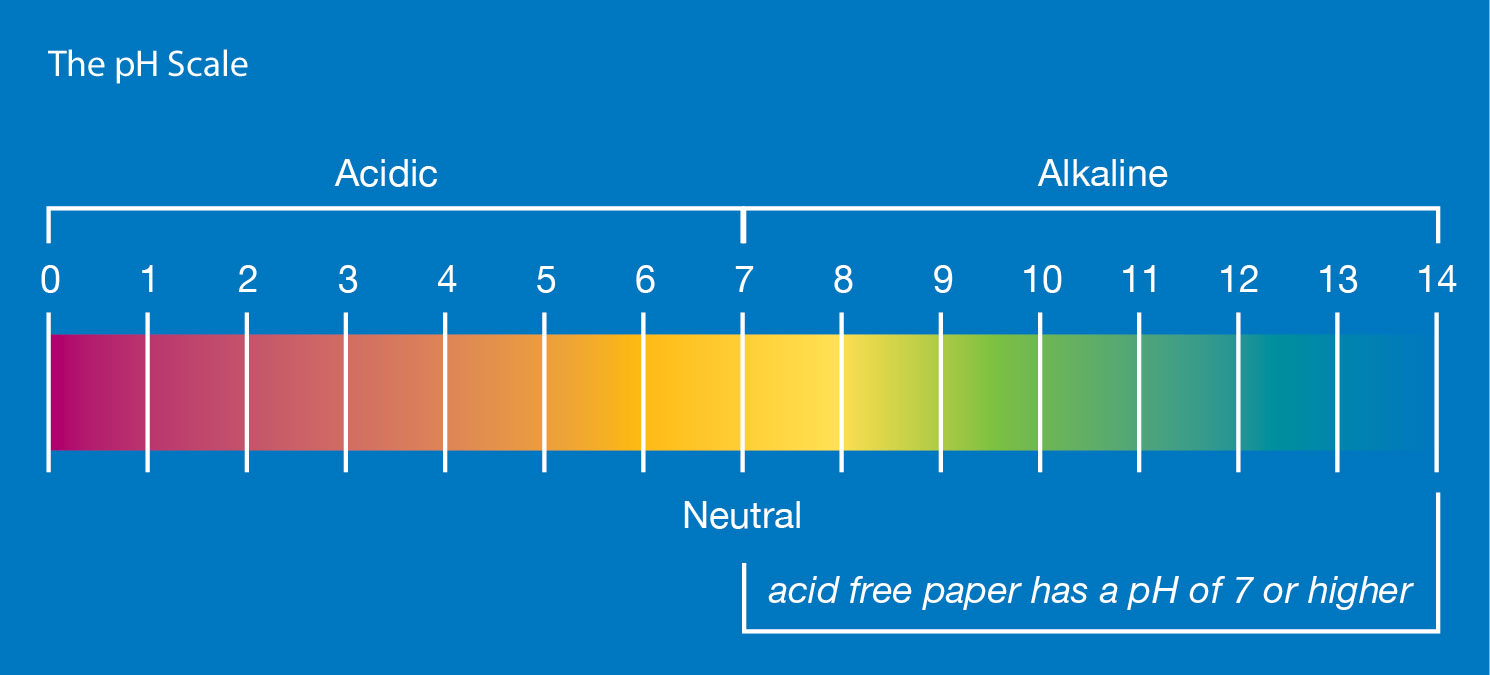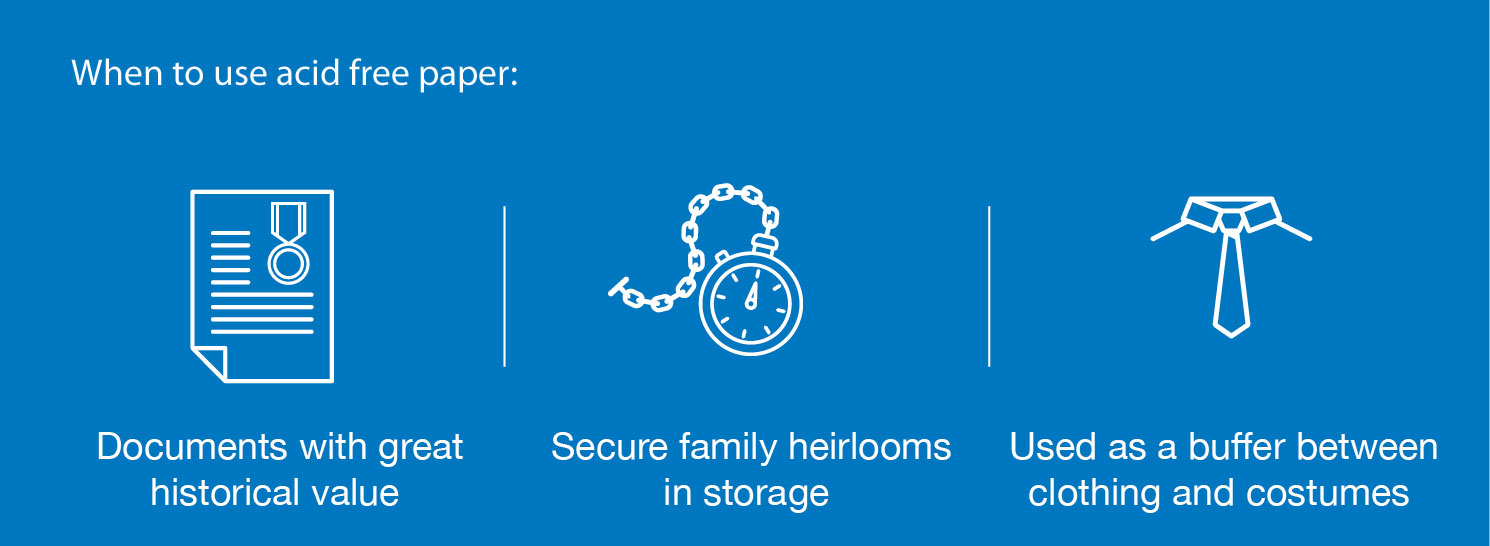If you’re printing a document of great importance (historical, legal, or otherwise) or using paper to help preserve cherished items, acid-free paper is your best bet. Learn more about this type of paper.
What is acid-free paper?
Acid-free paper is a type of paper that has a neutral or basic pH (a measure for solutions that contain a high concentration of hydrogen) of 7 or slightly higher.

How is acid-free paper made?
Like regular paper, acid-free paper is made from cellulose fibers, but the acid pulp of the fibers is removed during processing. Acid-free paper is also free from sulfur and lignin, an organic tissue in plant fibers that can turn paper yellow if not removed.
How long does acid-free paper last?
Acid-free paper is designed to last for centuries. Due to its construction, it will not yellow with age and won’t get brittle in the same way that paper with a higher degree of acidity can over time.
What is acid-free paper used for? Why is it important whether paper is acid-free or not?
Acid-free paper is also known as archival paper. Documents with great historical value or significance with regard to government, studies, and/or great works of art are often printed on acid-free archival paper so that it can last for centuries. This paper is highly durable and, because it is acid free, it will not become hard or brittle with age. It will not discolor or run the risk of crumbling into dust.

Acid-free paper is also used for packing and storage.
It can be used to secure and store collectibles. It can also be used as a buffer between clothing, costumes, or even family heirlooms—such as quilts, blankets, and wedding gowns. One of the chief benefits of acid-free tissue paper is that it will not transfer color from the paper to the object. Additionally, the lack of acid in acid-free tissue paper keeps it supple and keeps it from crumbling, maximizing its effectiveness in storing treasured items.
How can I be sure that I’m using acid-free paper?
One way you can check to be sure your paper is acid free is to use a special pH test pen. Simply make a mark on this paper with the pen. The mark will change color–from blue to green to yellow–to indicate how much acid is in your paper. A yellow mark indicates a higher degree of acidity, whereas a mark that leans more towards the blue end of the spectrum indicates it's less acidic and more alkaline.

